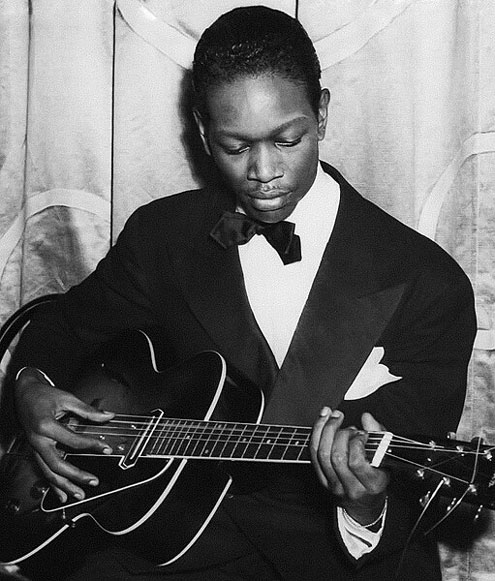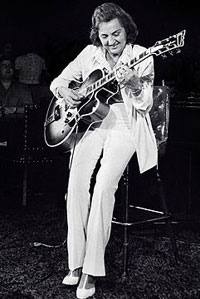Bonham, Texas -- The musical influence of innovative jazz guitarist Charlie Christian, born in a black section of Bonham known as "Tanktown" in 1916 and educated in Oklahoma City, was profound and far-reaching. In Christian's hands, the guitar was transformed from a background rhythm instrument into a featured and electrified solo instrument. Even the term "lead guitarist" may have originated with Christian's single-note technique during his two years (August 1939-June 1941) with the Benny Goodman Sextet.

Charlie Christian is widely regarded as one of the most influential pioneers of jazz guitar and record producer John Hammond considered Christian to be the best of the best improvisational talents of the swing era. Christian was inducted into the Rock and Roll Hall of Fame in 1990.
According to Wikipedia, the influence Christian had on "Dizzy" Gillespie, Charlie Parker, Thelonious Monk and Don Byas can be heard on their early bop recordings "Blue 'n' Boogie" and "Salt Peanuts." Other musicians, notably trumpeter Miles Davis, cited Christian as an early influence.
But Christian's influence had already reached far beyond the late-night jazz hotspots in Harlem.

For Osborne, it all started in 1938 when the 17-year-old went to a concert in Bismarck, North Dakota to see jazz pianist Alphonso Trent. Turned out, it was a lanky, 22-year-old lead guitarist who stole the show.
Osborne was familiar with all the best jazz guitarists of that era and, as far as she knew, they all played acoustic guitar.
"... here was Charlie Christian playing Django Reinhardt's 'St. Louis Blues' not- for-note, but with an electric guitar," Osborne vividly recalled. "It was the most startling thing I had ever heard."
The first thing Osborne did the next day was buy an electric guitar. Her talent would eventually take her to New York City where Christian took time to mentor Osborne. By the late '30s, her skill had earned a place on the stage with people like Coleman Hawkins, Mary Lou Williams, Ben Webster and Dizzy Gillespie. Oh, there were numerous contrived appearances in "all-girl" bands to pay the bills, but there were also all-night jams at Harlem's famous clubs along 52nd Street.
Osborne married trumpeter Ralph Scaffidi and put together a trio to play around New York City. Too fast to
be pigeon-holed as simply a "girl guitarist," Osborne continued to be a favorite of jazz fans in the Big Apple before moving to Bakersfield, California in 1968 where Mary and Ralph launched a successful company that made guitars and amplifiers.
She found time to release a handful of critically acclaimed recordings from 1977-1981.
But Osborne still wasn't done. In 1990, she joined Lionel Hampton for a set during the Playboy Jazz Festival and reviewers claimed Osborne stole the show, just like Charlie Christian had done all those years before back in Bismarck.
Sources: Wikipedia and Curtis Davenport's Unsung Women of Jazz


